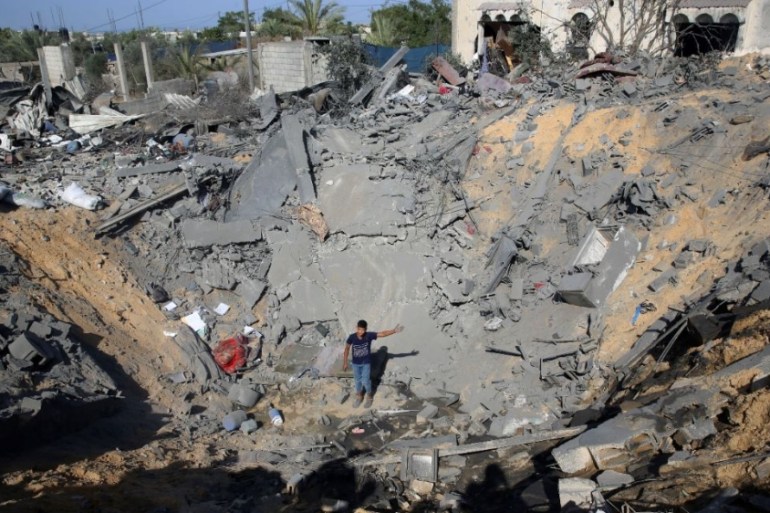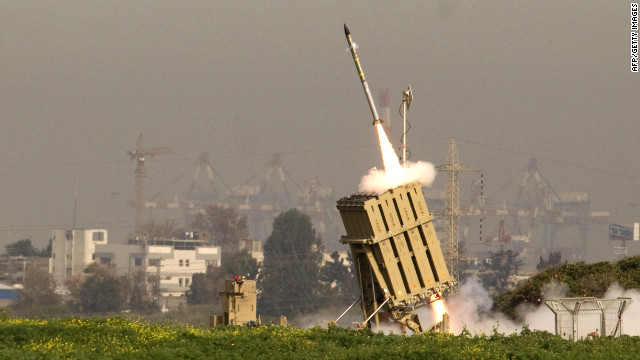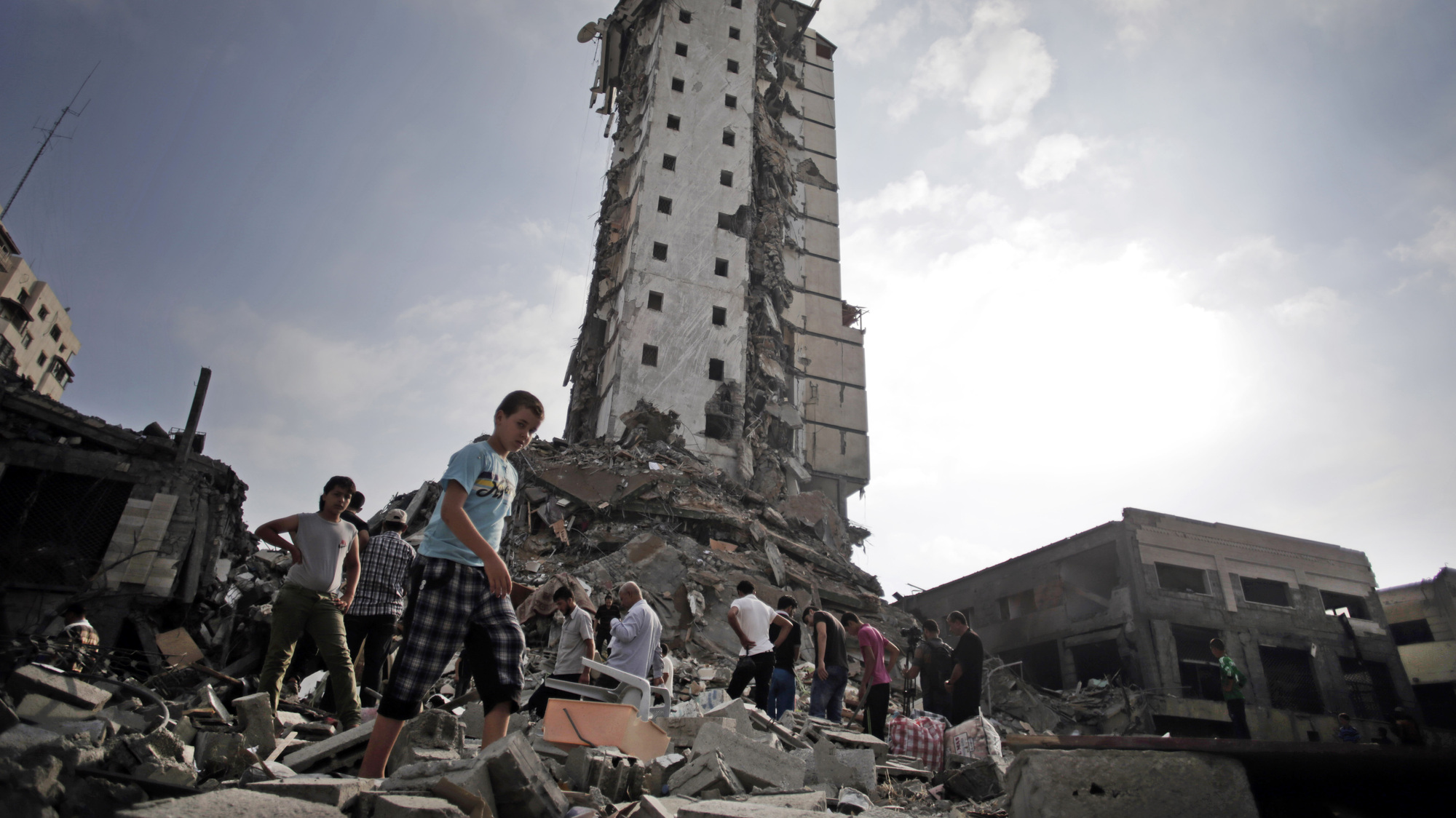
The Bombs Israel Has Been Dropping on Gaza Will Cost It Dearly
Zvi Bar’el / Haaretz
(May. 20, 2021) — The videos show multistory buildings collapsing like a tower of playing cards, roads pocked with craters, collapsed power lines, burning cars, shattered business establishments and the many dead, including women and children, who are referred to using the terrible term “collateral damage.” They don’t begin to tell the tragic story of Gaza — not this time around or during the many previous rounds.
Many of the injured will remain disabled for the rest of their lives. Those who have been hospitalized don’t have access to medicine that could ease their conditions. And it’s too early to talk about psychological help, if they can get it at all.
Thousands of people have left their homes to take shelter in UNRWA facilities. In Israel, we count the incoming rocket barrages, the number of Israel Air Force sorties over Gaza and the quantity of bombs our jets have dropped there and await an elusive victory, but in Gaza they ask when medicine will arrive and when there will be a reliable supply of food.

Israel’s Iron Dome anti-missile system intercepting an incoming rocket.
The diplomatic campaign that the two sides have waged in the run-up to a cease-fire has been in full swing. Each side has tried to squeeze out one last achievement from the fighting — another target, and more time — while every day that passes for roughly two million Gaza residents is a game of Russian roulette. The extent of damage to Gaza isn’t yet known, but according to cautious estimates, about $100 million in direct damage has been sustained. But in addition, there is the cost of lost workdays in a place where unemployment has been running at more than 50 percent and economic production has been suspended.
As after the war that Israel fought with Hamas in 2014 and previous military campaigns, not only Hamas but also the Palestinian Authority and Israel will have to address the economic collapse in Gaza, which threatens to lead to another explosion of violence if an immediate solution isn’t found.
Last time, it was the salaries that had not been paid to Hamas bureaucrats and fighters that prompted a new round of confrontations until a solution was found in the form of cash payments from Qatar, under Israel’s aegis. The money will continue to be delivered to Gaza now. Qatar announced a month ago that it plans to allocate some $360 million for needy families, whose numbers have now grown by tens of percent.
Germany has said that it is ready to make a contribution to help Gaza, but for now no one is talking about large sums, but several tens of millions of dollars to meet immediate needs. The Palestinian Authority can’t offer economic support because it’s in the middle of a serious economic crisis itself.
For the first time in two years, the PA has approved a regular budget, rather than an emergency one, adopted after Israel offset customs revenues and the PA refused to accept payment of the balance from Israel, but it ultimately relented.
The new Palestinian Authority budget includes an $800 million deficit, which is on top of debts of about $1.5 billion. In April, before President Mahmoud Abbas decided to delay elections to the Palestinian parliament, Palestinian Authority economists had estimated that a unified Hamas-Fatah government running Gaza and the West Bank would be able to cut costs by hundreds of millions of dollars by merging functions and laying off workers or sending them into retirement. But such a goal doesn’t appear in the offing for now. PA officials estimated that about 30 percent of a unified budget would be spent in Gaza, but that estimate has also gone by the wayside with the current round of fighting.
The approved Palestinian Authority budget includes $5.6 billion in spending, despite domestic revenues of $3.9 billion from taxes and fees. To that about $680 million from grants will be added, but Palestinian economists say these figures have no concrete basis.

“The release of part of the American aid that had been frozen during the Trump era still hasn’t arrived and, vis-a-vis the Arab countries, it’s hard to see any change coming in their policies on aid, which has shrunk a lot in recent years,” said an economic adviser to the Palestinian Finance Ministry.
The Biden administration announced that it would grant $235 million in aid, but a third of that is going to refugee-aid agencies, which are in the midst of a serious budget crisis themselves. The rest is to be used to finance development projects, not to cover the PA’s debts.
According to PA figures, Arab aid declined by 85 percent in 2020 to just $40 million. Saudi Arabia made the largest cuts, contributing only $32 million, compared with $175 million in 2019. The most common explanation for the drop is the decline in oil prices, which have deprived the Gulf states of considerable income. But Palestinians are certain that’s not the only explanation. It may not even be the main one.
“The Gulf states wanted to punish the Palestinians for opposing President Trump’s deal of the century,” said one Palestinian economist. “That’s at a time when Qatar continues to give money to Hamas without any problem and with Israel’s encouragement.” When that’s the situation for the Palestinian Authority when it comes the financial support from Arab countries, it’s reasonable to assume that a Gaza Strip under Hamas rule shouldn’t expect any major post-war assistance from its Arab brothers.
The heart of the PA’s economic crisis is the large share of the budget that goes to paying civil servants and security forces. Budget data show that last year, some 6,000 new government jobs were created, increasing costs by 10 percent over 2019. But that’s not the only problem.
Inside the PA, there has long been a stormy controversy over the distribution of salaries, especially in the security forces. Figures posted on the Fatah movement’s information website show that about 20 percent of the budget goes to the security forces. Of that 20 percent, 83 percent goes to salaries. More troubling is that of that 83 percent, about 63 percent goes to officers’ pay, which is on average about six times that of ordinary police officers and junior members of the security forces.
The need for salary reform, particularly in the security forces, has been the subject of countless articles in the Palestinian media. But in practice, due to the domestic political situation and the absence of a parliament to oversee the budget, an administrative revolution doesn’t seem to be in the offing.
Hamas, by contrast, is exempt from criticism over its budgetary conduct. The aid promised by the Arab world following the war in 2014 and the agreements on rehabilitating Gaza for the most part remained on paper. This time, it will be a lot more difficult to raise new funds and even more difficult to recruit investors to rebuild the factories that have been destroyed or to build new ones.

But after Israel finishes delivering another blow to Hamas, it won’t be able to evade responsibility for helping Gaza recover economically. Construction of a new power station, increasing the number of permits for Gazans to work in Israel and even building a new port aren’t just a humanitarian act. They’re a critical economic step. They are what could delay the next round of fighting, which could easily end up breaking out against the backdrop of economic distress.
Related
• Hamas chief: We will continue fighting until Al-Aqsa mosque is liberated
• Hamas has entered the big leagues
• Abbas delays Palestinian elections, citing Israel’s refusal to allow Jerusalem vote
• ‘The Gulf states wanted to punish the Palestinians’
Posted in accordance with Title 17, Section 107, US Code, for noncommercial, educational purposes.